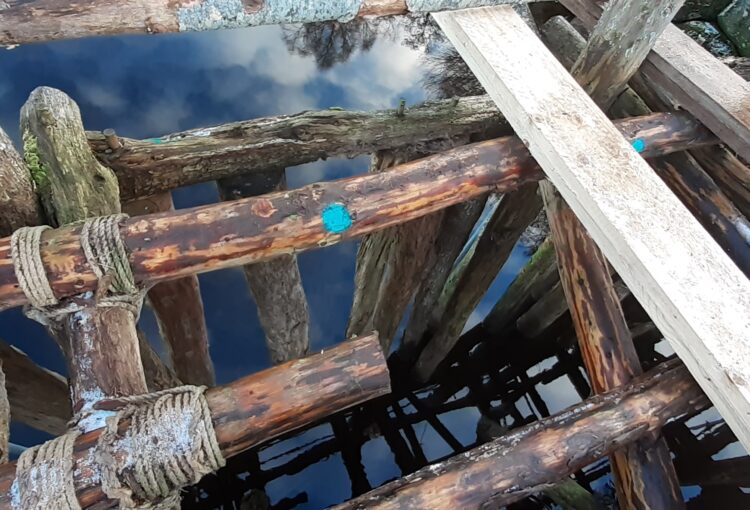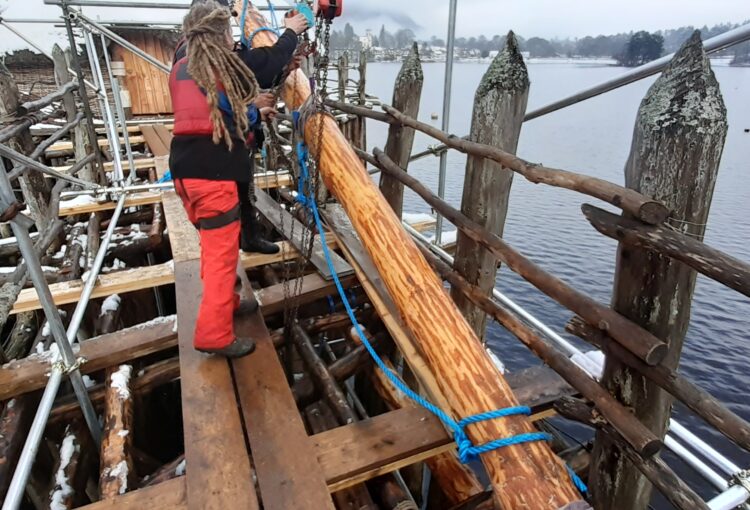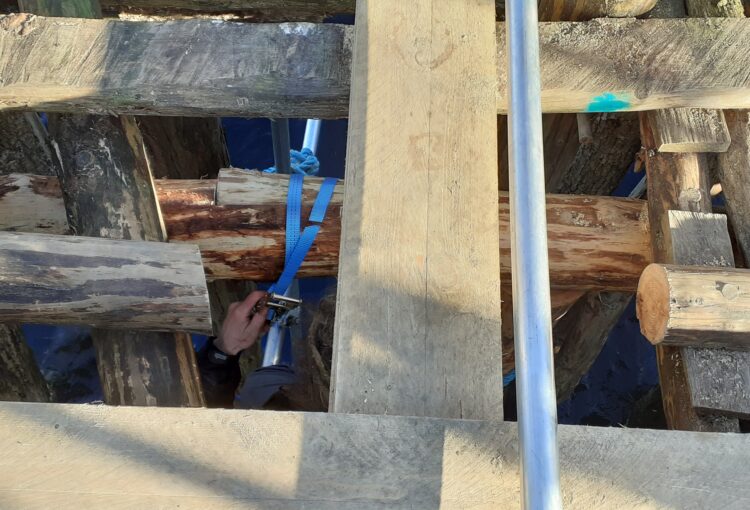Apprentice toby talks about his experience helping out on the winter crannog repairs.
During the repairs of the bridge of the crannog, there are quite a few steps and most of them are critical.
The need for repairs occurs because the older logs start to rot. As seen in the next image the horizontal timbers and the upright timbers holding them up rot, and if they are all that is holding the bridge up, it would eventually become unsafe.

What we do to repair the bridge is install a new horizontal timber along the full length of the walkway and hold it up with new upright timbers along all of it. A lot of things need to be pre-planned such as the angles the timbers will be floated in from and how to manoeuvre them into place.

And the assessing of possible problems and on the job improvising that happens is critical, although luckily there is not too much of that.
To start with, our wood delivery arrived on our front property, so as detailed in our last apprentice blog by Georgia, the upright timbers and new walkway logs had to be moved to the right locations.
Next is the removal of the walkway, this is important as it allows easy access to the underside of the bridge.

In order to easily lift the heavy upright and horizontal logs and also manoeuvre them in place precisely, chain hoists are used. In order to use them, scaffolding is needed to be set up, and because we have uprights to put in all along the walkway, scaffolding was set up the whole length of the walkway.
Scaffolding boards are used as a flat and level surface to build the scaffolding on and we placed a line of boards along the middle of the bridge so we wouldn’t have to cautiously avoid the large gaps that the walkable surface covers.

The length of one horizontal timber that would span the whole length of the bridge would cost too much as it would be impractical to get it delivered, so two half-length timbers were used; Even though modern tools like chainsaws and chain hoists were used, we still used an Iron Age carpenters joint and some dowels to attach the two timbers together.

A fun fact about the upright timbers, which we quickly learned upon the first few repairs of our crannog reconstruction, is that you need to put the tree in the water upside down otherwise the capillaries in the tree will suck up water and it will continue to grow and sprout new branches and leaves.
Stay tuned for the Bridge Repairs video on the 25th of April that includes pictures and video taken during the 2020/21 winter repairs.
Winter maintenance kindly supported by Historic Environment Scotland



